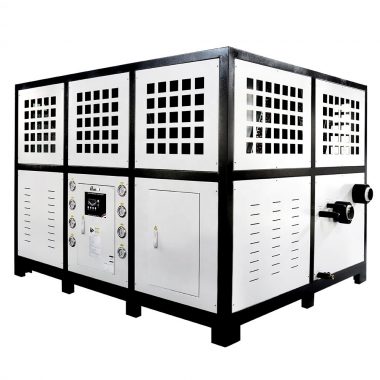Water chillers vs Air cooled chiller

Water Chillers
Compared to air-cooled chillers, water-cooled chiller systems are more efficient since they have a cooling tower. Since ambient wet bulb temperature, which is lower than ambient dry bulb temperature, is what causes water cooled chillers to condense, they are more effective. A chiller is more effective the lower it condenses.
What are the benefits of a water-cooled chiller?
Water chillers are more compact than air-cooled chillers, which makes them more efficient. These chillers are also more efficient and last longer than the former option.
Evaporator
The evaporator’s job is to create cold water. At roughly 6 °C (42.8 °F), the mechanism releases the water, which is then pushed by a pump throughout the building. We need to understand how to pipe chilled water across the building’s various relevant sections using a network of pipes. The water is now warmer at roughly 12 °C (53.6°F) after exchanging coldness with room air that passes across the Air Handling Units (AHU’s) and fan coil units (FCU’s). The refrigerant in the evaporator transfers the heat to the condenser, where it is absorbed. The water can now be used to keep the facility chilly after being re-chilled.
Condenser
A refrigerant removes heat from the evaporator and transports it to the condenser. The cooling tower and condenser are both connected by a loop that is separate from the condenser water loop. The water travels to the cooling tower at 32 °C (89.6 °F) after leaving the condenser at roughly 27 °C (80.6 °F).
Cooling Towers
This is where excess heat in a building is directed. The unit is supplied with air via a large fan. Condenser water approaches and encounters the air. The condenser water loses heat to the air through direct contact. The cycle continues as the condenser water returns to the condenser.
Air Cooled Chiller

- No cooling towers.
- low costs for maintaining.
- No water waste means better environmental stability.
- Control-tower freezing and tower bypass are absent, therefore operation is simpler.
- saved chemical costs.
- reduced water costs, especially in urban areas.
- No water issues to cope with in the event of a catastrophe.





